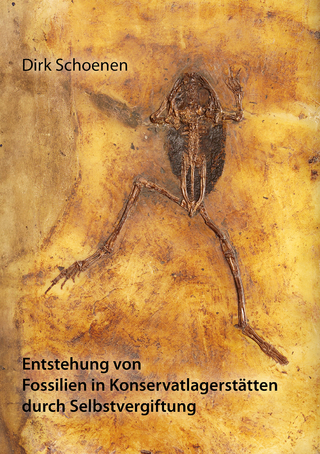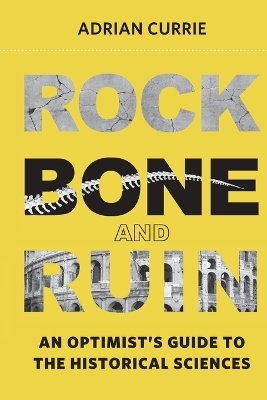
Additives and Crystallization Processes
Wiley-Blackwell (Verlag)
978-0-470-06153-4 (ISBN)
- Titel ist leider vergriffen;
keine Neuauflage - Artikel merken
Professor Keshra Sangwal is Senior Professor of Physics (since 1997) and Head of the Department of Applied Physics and Lublin University of Technology, Poland. He is author or co-author of over 160 publications in the field of elementary processes of growth and dissolution, real structure of crystals, structure and properties of electrolyte solutions, and mechanical properties of crystalline solids, including three books (see Author's Previous Works). He has served as Guest Editor of several issues of Crystal Research and Technology and is a member of the advisory boards of 'Crystal Research and Technology' (Wiley-VCH),' Journal of Optoelectronics and Advanced Materials', and the 'Indian Journal of Engineering and Materials Science'. He is a member of the Polish Physical Society, Polish Society of Crystal Growth and the Crystallography Committee of the Polish Academy of Sciences. He is a co-founder of the Polish Society of Crystal Growth and served as its President from 1998 - 2001. He has worked as a visiting scientists in the Instituto de Ciencia de Materiales de Barcelona, a UNDP specialist in Anna University (India), and a visiting professor at the University of Barcelona, and Hiroshima University.
Preface. 1 Complexes in Solutions. 1.1 Structure of Common Solvents. 1.2 Structure of Pure Aqueous Electrolyte Solutions. 1.2.1 Solvation of Electrolyte Ions in Solutions. 1.2.2 Concentrated and Saturated Electrolyte Solutions. 1.2.3 Formation of Aquo and Partially Aquo Complexes. 1.3 Structure of Aqueous Electrolyte Solutions Containing Additives. 1.4 Polyelectrolytes and Surfactants in Solutions. 1.5 Polydentate Ligands and Molecular Additives. 1.6 Crystal-Additive Interactions. References. 2 Three-Dimensional Nucleation and Metastable Zone Width. 2.1 Driving Force for Phase Transition. 2.2 Three-Dimensional Nucleation of Crystals. 2.2.1 Three-Dimensional Nucleation Rate. 2.2.2 Three-Dimensional Heterogeneous Nucleation. 2.3 Metastable Zone Width. 2.4 Nucleation and Transformation of Metastable Phases. 2.4.1 Crystallization of Metastable Phases. 2.4.2 Overall Crystallization. 2.5 Induction Period for Crystallization. 2.6 Effects of Additives. 2.6.1 Solubility. 2.6.2 Three-Dimensional Nucleation Rate. 2.6.3 Metastable Zone Width. References. 3 Kinetics and Mechanism of Crystal Growth: An Overview. 3.1 Crystal Growth as a Kinetic Process. 3.2 Types of Crystal-Medium Interfaces. 3.3 Roughening of Steps and Surfaces. 3.3.1 Thermodynamic Roughening and the Surface Entropy Factor. 3.3.2 Kinetic Roughening. 3.4 Growth Kinetics of Rough Faces. 3.5 Growth Kinetics of Perfect Smooth Faces. 3.6 Growth Kinetics of Imperfect Smooth Faces. 3.6.1 Surface Diffusion and Direct Integration Models. 3.6.2 Bulk Diffusion Models. 3.6.3 Growth by a Group of Cooperating Screw Dislocations. 3.6.4 Preferential Growth at Edge Dislocations. 3.7 Effect of Foreign Substances on Growth Kinetics. 3.7.1 Some General Considerations. 3.7.2 Growth Kinetics by Heterogeneous Two-Dimensional Nucleation. 3.8 Real Crystal Growth Mechanisms. 3.8.1 Structure of Interfacial Layer. 3.8.2 Sources of Growth Steps. 3.9 Techniques for Studying Growth Kinetics. References. 4 Effect of Impurities on Crystal Growth Kinetics. 4.1 Mobile and Immobile Impurities. 4.2 Surface Coverage and Adsorption Isotherms. 4.2.1 Adsorption Isotherms. 4.2.2 Changes in Surface Free Energy by Adsorption of Impurities. 4.3 Kinetic Models of Impurity Adsorption. 4.3.1 Earlier Models. 4.3.2 Velocity of Curved Steps. 4.3.3 Impurity Adsorption at Kinks in Steps: Kubota-Mullin Model. 4.3.4 Impurity Adsorption at Surface Terrace: Cabrera-Vermilyea Model. 4.3.5 Effectiveness Factor for Impurity Adsorption. 4.3.6 Adsorption of Two Competing Impurities. 4.4 Confrontation of Impurity Adsorption Mechanisms with Experimental Data. 4.5 Time-Dependent Impurity Adsorption. 4.6 Growth Kinetics in the Presence of Impurities. 4.6.1 Basic Kinetic Equations. 4.6.2 Time Dependence of Face Displacement. 4.6.3 Dependence of Kinetic Coefficient for Step Motion on Impurity Concentration. 4.7 Tapering of KDP-Type Crystals. 4.8 Growth-Promoting Effects of Impurities. 4.8.1 Decrease in Step Free Energy and Roughening of Steps. 4.8.2 Formation of Surface Macroclusters. 4.9 Impurity Adsorption on Rough Faces. 4.10 Formation of Two-Dimensional Adsorption Layer. 4.11 Interactions Between Additives and Crystal Interface. 4.11.1 Nature of Impurity-Crystal Interactions. 4.11.2 Chemical Aspects of Impurity-Crystal Interactions. 4.12 Tailor-Made Additives. References. 5 Dead Supersaturation Zone and Threshold Supersaturations for Growth. 5.1 Origin of Threshold Supersaturations for Growth. 5.1.1 Basic Kinetic Equations. 5.1.2 Three Different Distances Between Impurity Particles. 5.2 Determination of Threshold Supersaturations from v(sigma) and R(sigma) Data. 5.2.1 Relationship Between the Model Involving Cooperating Spirals and the Power-Law Approach. 5.2.2 Relationship Between the Power-Law Approach and an Empirical Expression with Corrected Supersaturation. 5.2.3 Determination of sigma. 5.3 Dependence of Threshold Supersaturations on Impurity Concentration: Basic Theoretical Equations and Linear Approximations. 5.4 Confrontation of Theoretical Equations with Experimental Data. 5.4.1 Impurity Adsorption at Kinks and Surface Terrace. 5.4.2 Threshold Supersaturations and Impurity Adsorption Isotherms. 5.5 Impurity Adsorption and Solution Supersaturation. 5.6 Dependence of Ratios sigmad/sigma and sigma/sigma on ci References. 6 Mineralization in Natural and Artificial Systems. 6.1 Biomineralization as a Process. 6.1.1 Structure and Composition of Biominerals. 6.1.2 Humans and Animals. 6.1.3 Plants. 6.1.4 Mollusk Shells and Avian Eggshells. 6.2 Pathological Mineralization. 6.3 Effect of Biologically Active Additives on Crystallization Processes. 6.3.1 Overall Precipitation Kinetics. 6.3.2 Overall Growth Kinetics. 6.3.3 Phases and Polymorphs of Crystallizing Calcium Salts. 6.3.4 Transformation of Metastable Phases. 6.4 Scale Formation and Salt Weathering. References. 7 Morphology and Size Distribution of Crystals. 7.1 Growth Morphology of Crystals. 7.1.1 General Concepts. 7.1.2 Effect of Additives on Surface Morphology. 7.1.3 Effect of Solvent on Crystal Morphology. 7.1.4 Growth Morphodroms. 7.2 Ostwald Ripening and Crystal Size Dispersion. 7.3 Crystal Size Distribution. 7.3.1 Population Balance Approach. 7.3.2 Balanced Nucleation-Growth Approach. 7.3.3 Approach Based on Law of Proportionate Effect. 7.3.4 Effect of Additives on Crystal Size Distribution. 7.4 Control of Shape and Size of Particles. 7.4.1 Growth-Directed Synthesis. 7.4.2 Template-Directed Synthesis. 7.5 Biological Tissue Engineering. References. 8 Additives and Crystallization Processes in Industries. 8.1 Pharmaceutical Industry. 8.1.1 Nucleation, Growth and Morphology of Drug Crystals. 8.1.2 Preparation and Size Distribution of Drug Particles. 8.2 Petroleum Industry. 8.2.1 Some Basic Concepts. 8.2.2 Crystallization Behavior of Linear Long-Chain n-Alkanes. 8.2.3 Biodiesels and their Crystallization Behavior. 8.3 Food Industry. 8.3.1 Some Basic Concepts. 8.3.2 Crystallization of Food Fats in the Bulk. 8.3.3 Crystallization of Polymorphs. 8.3.4 Crystallization of Fats and Oils in Emulsion Droplets. 8.3.5 Number of Nucleation Centers and Overall Crystallization in Emulsion Systems. References. 9 Incorporation of Impurities in Crystals. 9.1 Types of Impurity Incorporation and the Segregation Coefficient. 9.2 Equilibrium Segregation Coefficient. 9.2.1 Binary Mixture Approach. 9.2.2 Thermodynamic Approach. 9.2.3 Theoretical Predictions and their Comparison with Experimental Data on Segregation Coefficient. 9.3 Effective Segregation Coefficient. 9.3.1 Volume Diffusion Model. 9.3.2 Diffusional Relaxation Approach. 9.3.3 Statistical Selection Approach. 9.3.4 Surface Adsorption Approach. 9.4 Relationship Between Effective Segregation Coefficient and Face Growth Rate. 9.5 Threshold Supersaturation for Trapping of Impurities During Growth. 9.6 Effective Segregation Coefficient and Internal Stresses Caused by Impurities. References. List of Symbols. Subject Index. Author Index.
| Erscheint lt. Verlag | 1.11.2007 |
|---|---|
| Verlagsort | Hoboken |
| Sprache | englisch |
| Maße | 176 x 253 mm |
| Gewicht | 954 g |
| Einbandart | gebunden |
| Themenwelt | Naturwissenschaften ► Chemie |
| Naturwissenschaften ► Geowissenschaften ► Mineralogie / Paläontologie | |
| Technik ► Maschinenbau | |
| ISBN-10 | 0-470-06153-7 / 0470061537 |
| ISBN-13 | 978-0-470-06153-4 / 9780470061534 |
| Zustand | Neuware |
| Haben Sie eine Frage zum Produkt? |
aus dem Bereich


